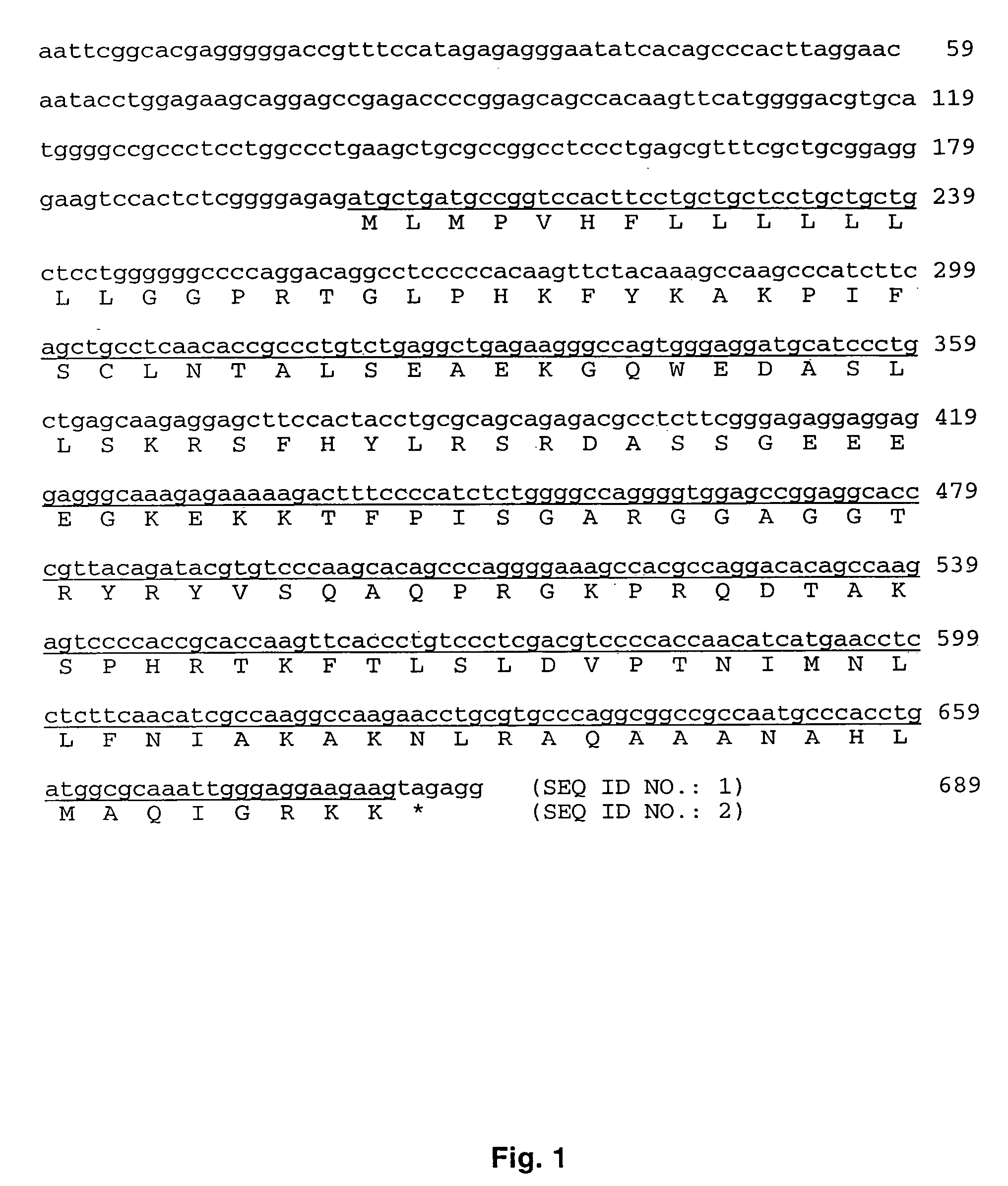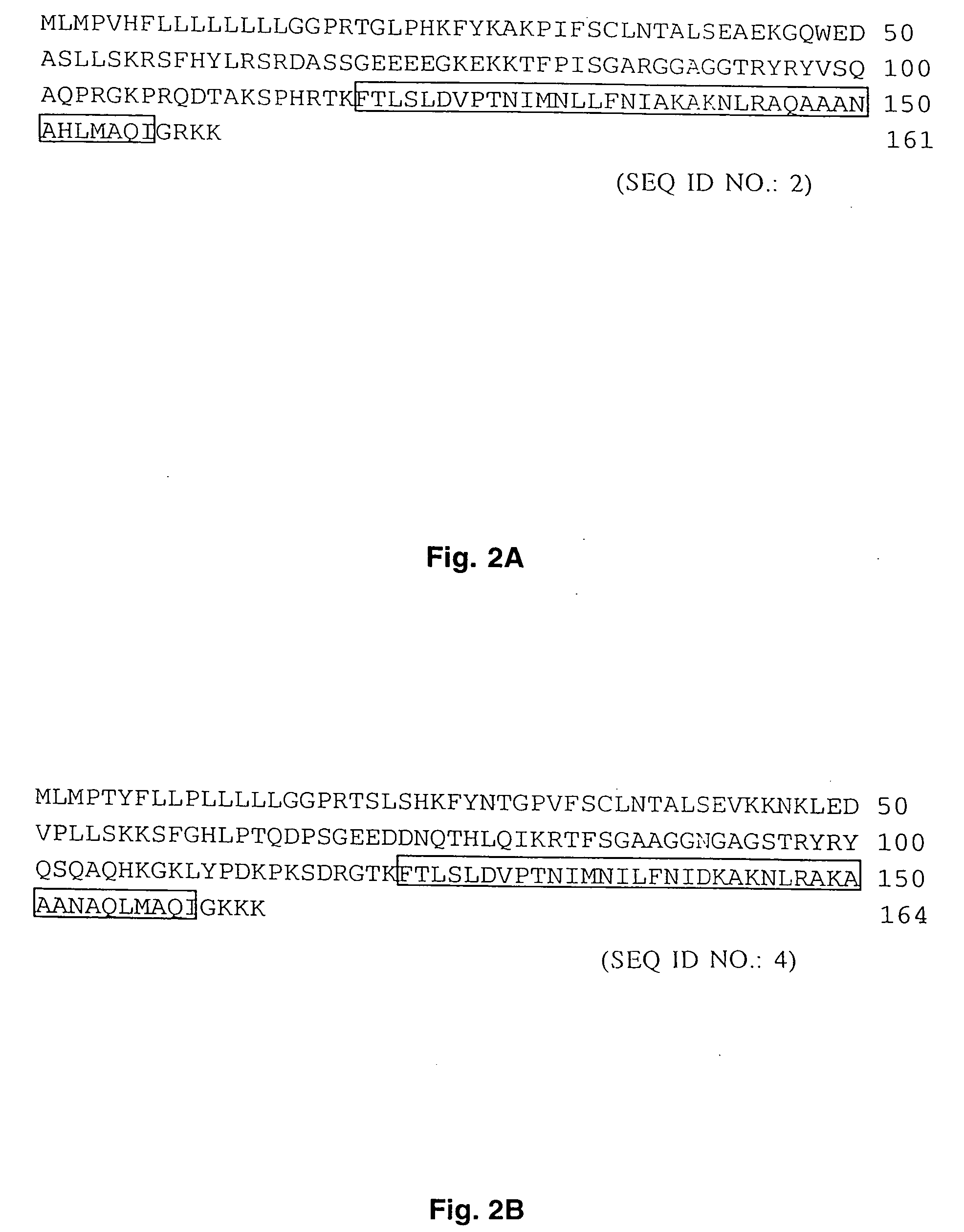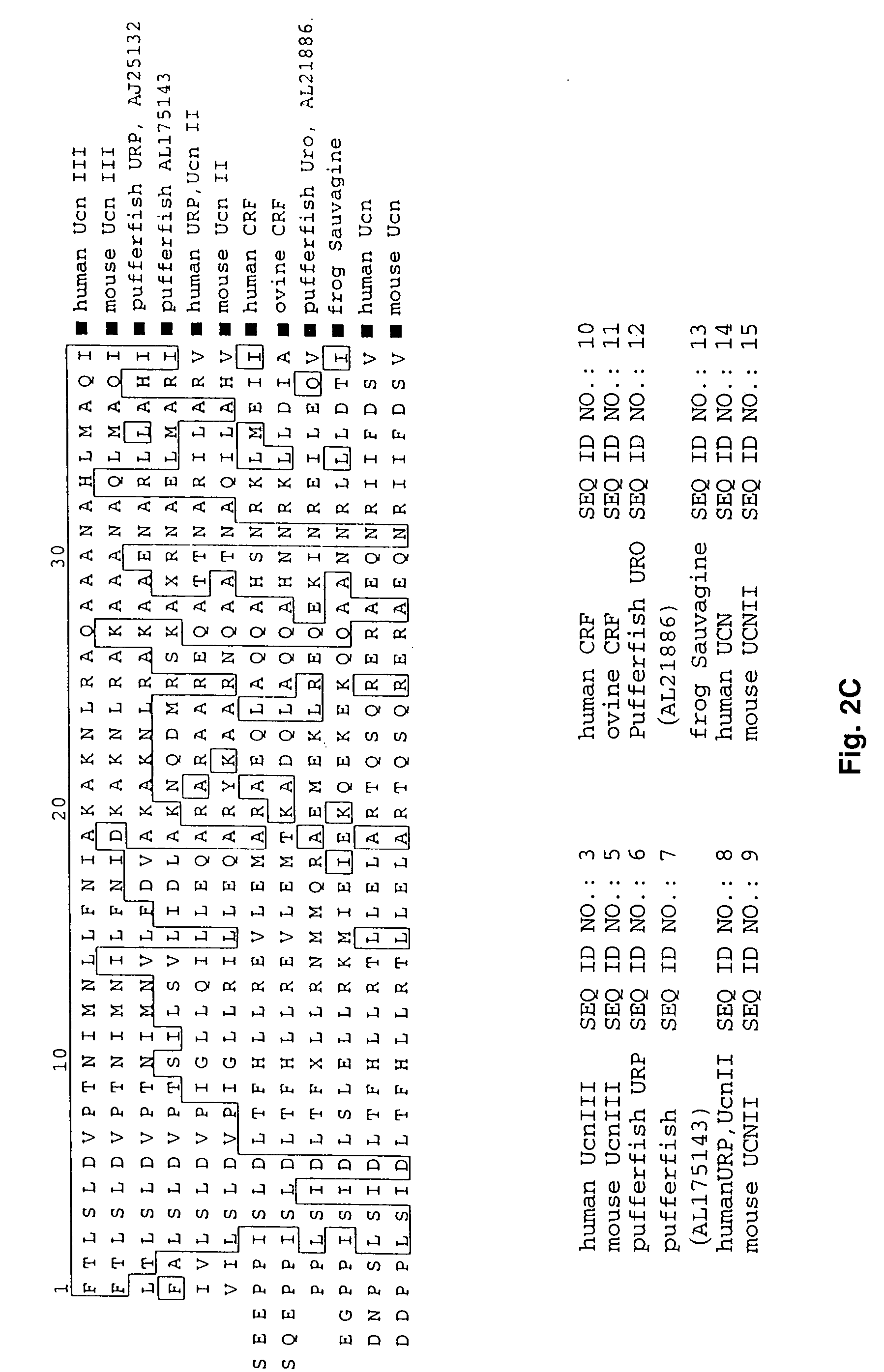Urocortin-III and uses thereof
a technology of urocortin and iii, applied in the field of neuroendocrinology and neuropeptide chemistry, can solve the problem of deficiency in the recognition of human urocortin-iii in the early ar
- Summary
- Abstract
- Description
- Claims
- Application Information
AI Technical Summary
Benefits of technology
Problems solved by technology
Method used
Image
Examples
example 1
Identification of Human Urocortin III
[0072] The human expressed sequence tag (EST) database of Genbank was searched using a pufferfish (Takifugu rubripes) sequence (Genbank assession number AJ251323) related to urocortin (urocortin related peptide, URP) as a probe. This search identified a human EST, GenBank accession number AW293249 with significant sequence homology to the pufferfish urocortins. Sequence homology comparisons of the novel sequence with human urocortin I and urocortin II revealed that the sequence encoded a novel human urocortin, which was designated urocortin III. The partial human EST contained the precursor sequence and the first 29 amino acids of the mature peptide region. Nested primers for urocortin III were designed based on the partial human EST sequence consisting of the sequences 5′-AAG AGT CCC CAC CGC ACC AAG TTC ACC-3′ (SEQ ID No. 16) and 5′-TCC CTC GAC GTC CCC ACC AAC ATC ATG-3′ (SEQ ID No. 17). These primers were used along with nested anchored prime...
example 2
Identification of Mouse Urocortin III by Hybridization Screening
[0074] Based on the full-length human Ucn III sequence, a 144 bp probe was generated, spanning the mature peptide region, to search for a mouse ortholog. The probe was used to screen a mouse genomic λFIXII library (Stratagene) by low stringency hybridization. Hybridization was carried out at 42° C. overnight, in 20% formamide / 5×SSC / 5× Denhardts / 0.5% SDS / 5% dextran sulfate. Washes were performed in 1×SSC at 55° C. Purified plaques were subcloned into pBluescript and sequenced. A full-length mouse genomic clone was identified and sequenced. A mouse Ucn III cDNA was isolated from whole brain cDNA by PCR using primers designed from the mouse genomic sequence. PCR was performed at 55° C. for 35 cycles with 2 min extension at 72° C.
example 3
Analysis of the Human and Mouse Ucn III Genes
[0075] Both the human and mouse Ucn III genes contain two potential initiation sites for translation. The nucleotide sequence of the human gene encodes a protein deduced to be either 161 or 159 amino acids, depending on the N-terminal methionine used, with preference for the first methionine according to the Netstart 1.0 prediction server (22)(FIG. 2A). The mouse gene encodes a protein deduced to be either a 164 or 162 amino acid precursor also with preference for translation beginning at the first methionine (FIG. 2B). Processing of the precursor molecule to generate the putative 38 amino acid mature peptide is predicted to occur by cleavage at the C-terminal side of Lys 119 for the human gene and following Lys 122 for mouse Ucn III. Thus, Ucn III conforms to the rules for processing at monobasic residues (23), similar to Ucn and murine Ucn II. The C-terminal sequence contains a pair of basic residues, (R-K) for the human and (K-K) for...
PUM
| Property | Measurement | Unit |
|---|---|---|
| stress | aaaaa | aaaaa |
| affinities | aaaaa | aaaaa |
| affinity | aaaaa | aaaaa |
Abstract
Description
Claims
Application Information
 Login to View More
Login to View More - R&D
- Intellectual Property
- Life Sciences
- Materials
- Tech Scout
- Unparalleled Data Quality
- Higher Quality Content
- 60% Fewer Hallucinations
Browse by: Latest US Patents, China's latest patents, Technical Efficacy Thesaurus, Application Domain, Technology Topic, Popular Technical Reports.
© 2025 PatSnap. All rights reserved.Legal|Privacy policy|Modern Slavery Act Transparency Statement|Sitemap|About US| Contact US: help@patsnap.com



